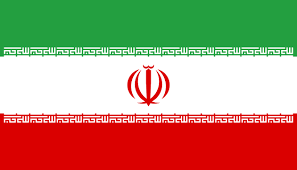Difference between revisions of "Language/Iranian-persian/Grammar/Lesson-9:-Possessive-pronouns"
m (Quick edit) |
m (Quick edit) |
||
| Line 1: | Line 1: | ||
<span pgnav> | |||
{| class="wikitable pg_template_nav" | |||
|[[Language/Iranian-persian/Grammar/Lesson-8:-Direct-object-pronouns|◀️ Lesson 8: Direct object pronouns — Previous Lesson]] | |||
|[[Language/Iranian-persian/Culture/Lesson-10:-Persian-etiquette-and-hospitality|Next Lesson — Lesson 10: Persian etiquette and hospitality ▶️]] | |||
|} | |||
</span> | |||
{{Iranian-persian-Page-Top}} | {{Iranian-persian-Page-Top}} | ||
| Line 110: | Line 117: | ||
{{Iranian-persian-Page-Bottom}} | {{Iranian-persian-Page-Bottom}} | ||
<span links></span> | <span links></span> | ||
<span pgnav> | |||
{| class="wikitable pg_template_nav" | |||
|[[Language/Iranian-persian/Grammar/Lesson-8:-Direct-object-pronouns|◀️ Lesson 8: Direct object pronouns — Previous Lesson]] | |||
|[[Language/Iranian-persian/Culture/Lesson-10:-Persian-etiquette-and-hospitality|Next Lesson — Lesson 10: Persian etiquette and hospitality ▶️]] | |||
|} | |||
</span> | |||
Revision as of 17:30, 29 March 2023
| ◀️ Lesson 8: Direct object pronouns — Previous Lesson | Next Lesson — Lesson 10: Persian etiquette and hospitality ▶️ |
Welcome to lesson 9 of the Complete 0 to A1 Iranian Persian Course! In this lesson, we will learn about possessive pronouns in Persian.
%s_lesson_descr%
After mastering this lesson, these related pages might interest you: Lesson 14: Past tense of regular verbs & Conditional Mood.
Possessive Pronouns
Possessive pronouns are used to show ownership or a relationship between two things or people. In Persian, there are two types of possessive pronouns: dependent and independent.
Dependent possessive pronouns are used before the noun they modify and agree with it in gender and number. For example:
| Iranian Persian | Pronunciation | English |
|---|---|---|
| خانه من | xāne-ye man | my house |
Independent possessive pronouns come after the noun they modify and do not change form. For example:
| Iranian Persian | Pronunciation | English |
|---|---|---|
| کتاب من | ketāb-e man | my book |
Here is a list of Persian possessive pronouns:
| Pronoun | Dependent form | Independent form |
|---|---|---|
| my | من / ی من | من |
| your (singular, informal) | تو / ی تو | تو |
| his/her/its | او / ی او | او |
| our | ما / ی ما | ما |
| your (plural, formal) | شما / ی شما | شما |
| their | آنها / ی آنها | آنها |
Note that in Persian, the independent form of the possessive pronoun is used more frequently than the dependent form.
Using Possessive Pronouns
Possessive pronouns in Persian are used in the same way as in English. Here are some examples:
- کتاب من اینجاست. (My book is here.)
- پدر تو چطوره؟ (How is your father?)
- خانه ما خیلی بزرگ است. (Our house is very big.)
- لباس آنها خیلی شیک است. (Their clothes are very stylish.)
Exercises
- Translate these sentences to Persian:
1. Their car is new. 2. My sister's name is Leyla. 3. Is your phone working? 4. Our dog is friendly. 5. Her apartment is small.
- Translate these sentences to English:
1. خانه شما کجاست؟ 2. کلاس من ساعت ۹ شروع میشود. 3. کتاب آنها قدیمی است. 4. زمین من پر از گل است. 5. جانبازان ما قهرمانان هستند.
Sources
Other Lessons
- Comaratives and Superlatives
- Pronouns
- Negation
- How to say goodbye
- Prepositions
- Future Tense
- Turn
- Singular and Plurals in Persian
- Lesson 4: Present tense conjugation of the verb to be
- Present Tense
| ◀️ Lesson 8: Direct object pronouns — Previous Lesson | Next Lesson — Lesson 10: Persian etiquette and hospitality ▶️ |

